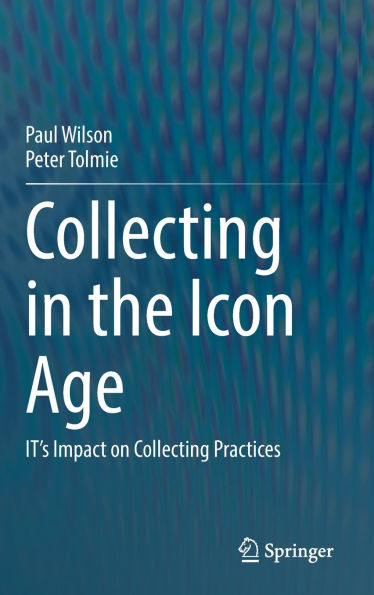Collecting in the Icon Age: IT's Impact on Collecting Practices
This book is about the impact of the 'Icon Age' on people's collecting practices. The Icon Age is when objects began to be represented on computer screens via icons. It focuses on how the Icon Age has affected how people do things associated with collections, from their inception to their disposal and everything in-between. It also looks at different kinds of collections and how they are managed across seven key collecting contexts: accumulations; libraries; filing-systems; archives; museums and galleries; private collections; and amateur collections. To inform this, studies were undertaken of how collecting was done across a range of diverse collections. The book also presents a taxonomy of collectable object types, including new types of objects that have appeared since the onset of the Icon Age. The book draws out important lessons regarding the impact of IT on collecting practices and contexts. It also suggests that, where contexts use digital practices, these exhibit an increasing level of conformity. The book concludes by looking beyond the Icon Age to the potential impact on collecting of new kinds of computing technology.
1146931406
Collecting in the Icon Age: IT's Impact on Collecting Practices
This book is about the impact of the 'Icon Age' on people's collecting practices. The Icon Age is when objects began to be represented on computer screens via icons. It focuses on how the Icon Age has affected how people do things associated with collections, from their inception to their disposal and everything in-between. It also looks at different kinds of collections and how they are managed across seven key collecting contexts: accumulations; libraries; filing-systems; archives; museums and galleries; private collections; and amateur collections. To inform this, studies were undertaken of how collecting was done across a range of diverse collections. The book also presents a taxonomy of collectable object types, including new types of objects that have appeared since the onset of the Icon Age. The book draws out important lessons regarding the impact of IT on collecting practices and contexts. It also suggests that, where contexts use digital practices, these exhibit an increasing level of conformity. The book concludes by looking beyond the Icon Age to the potential impact on collecting of new kinds of computing technology.
199.99
Pre Order
5
1

Collecting in the Icon Age: IT's Impact on Collecting Practices
294
Collecting in the Icon Age: IT's Impact on Collecting Practices
294
199.99
Pre Order

Product Details
| ISBN-13: | 9783031864698 |
|---|---|
| Publisher: | Springer Nature Switzerland |
| Publication date: | 07/19/2025 |
| Pages: | 294 |
| Product dimensions: | 6.10(w) x 9.25(h) x (d) |
About the Author
From the B&N Reads Blog
